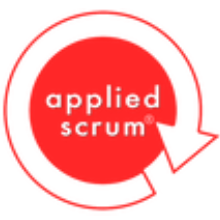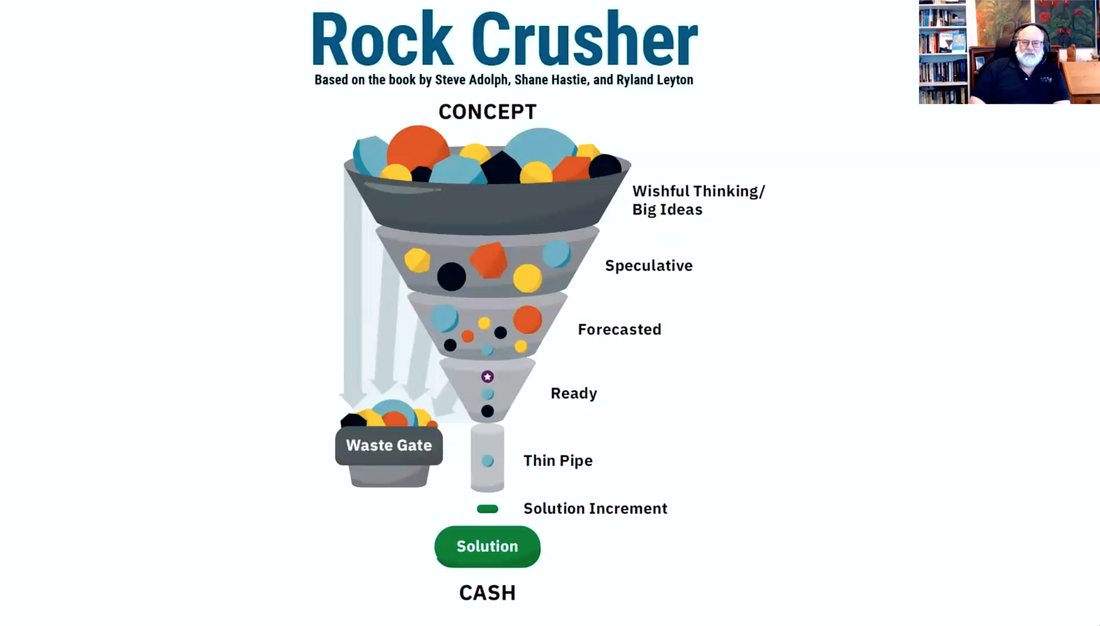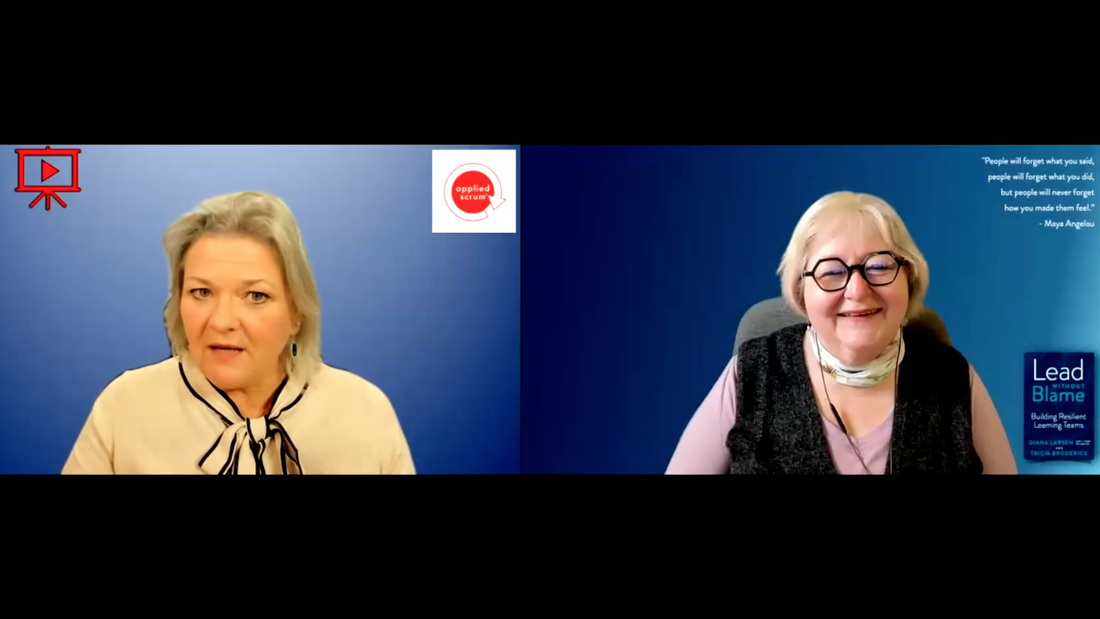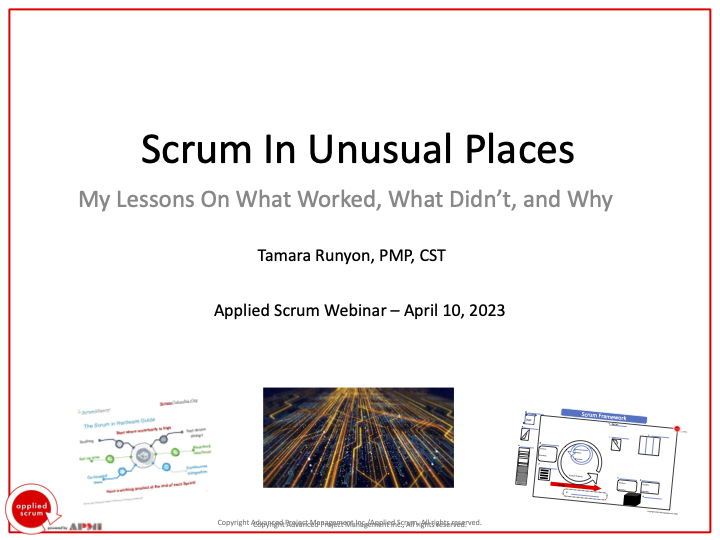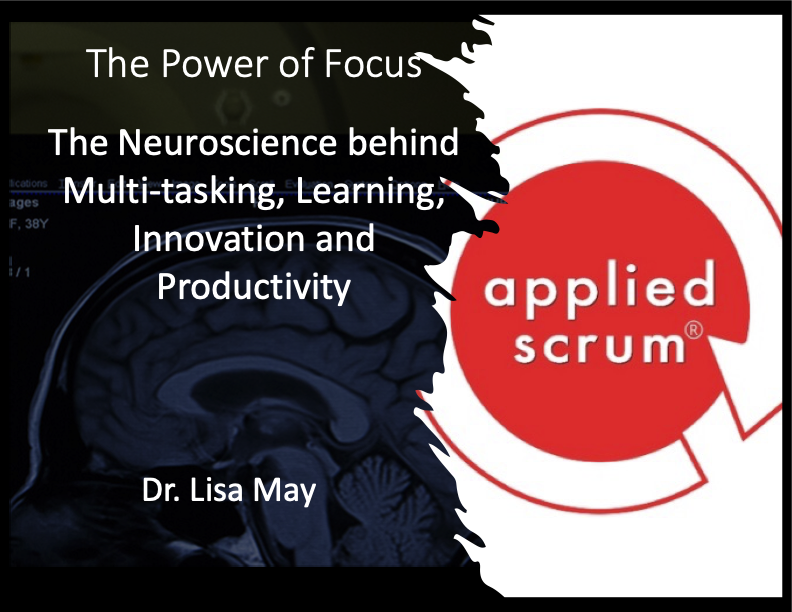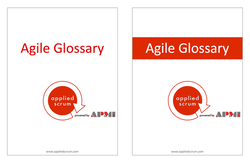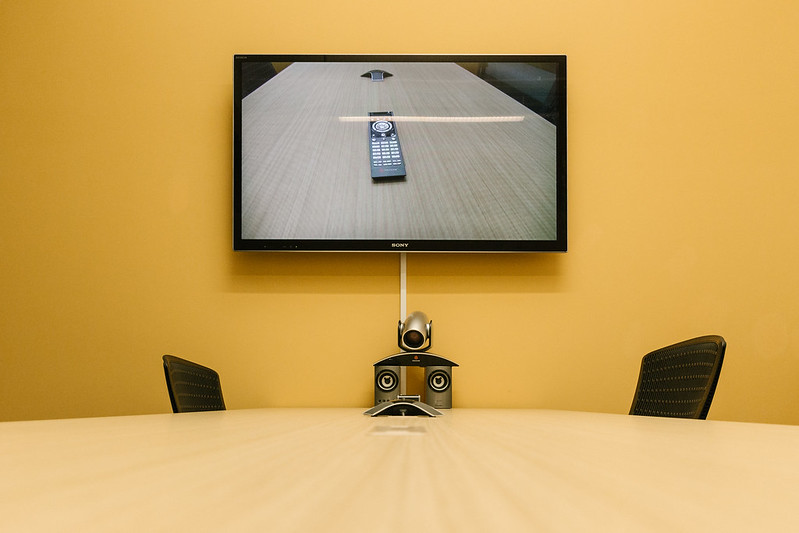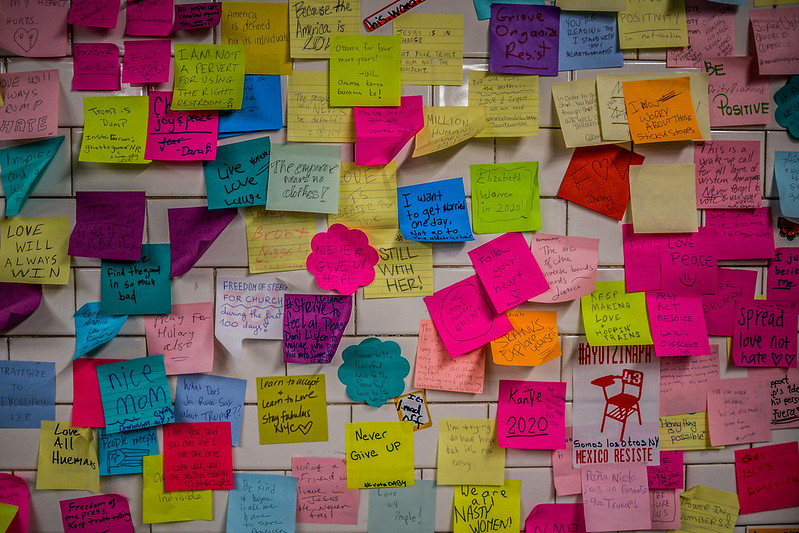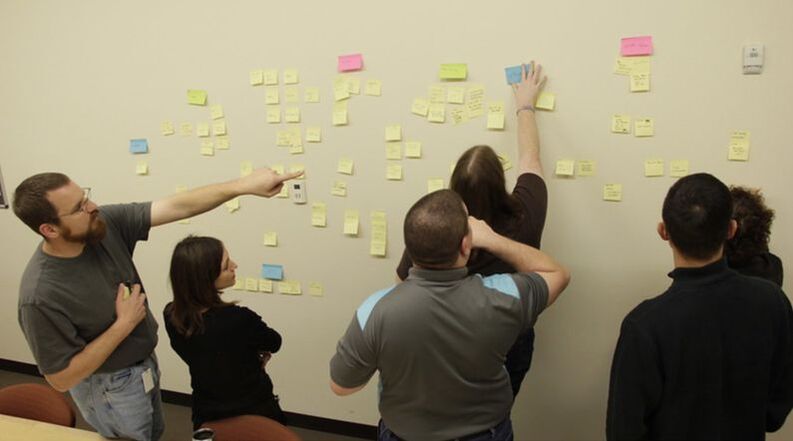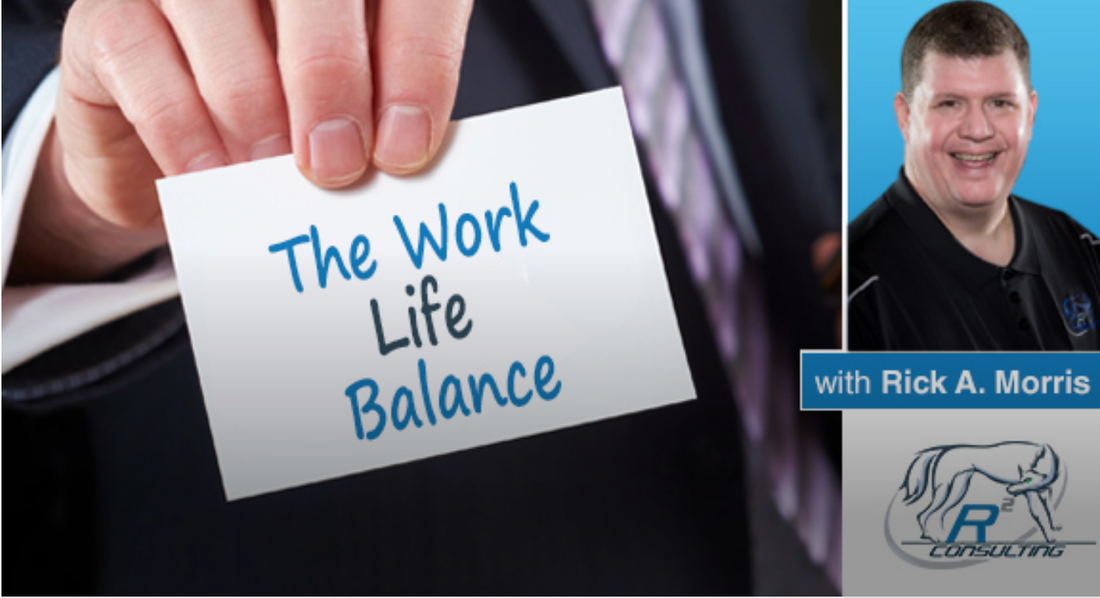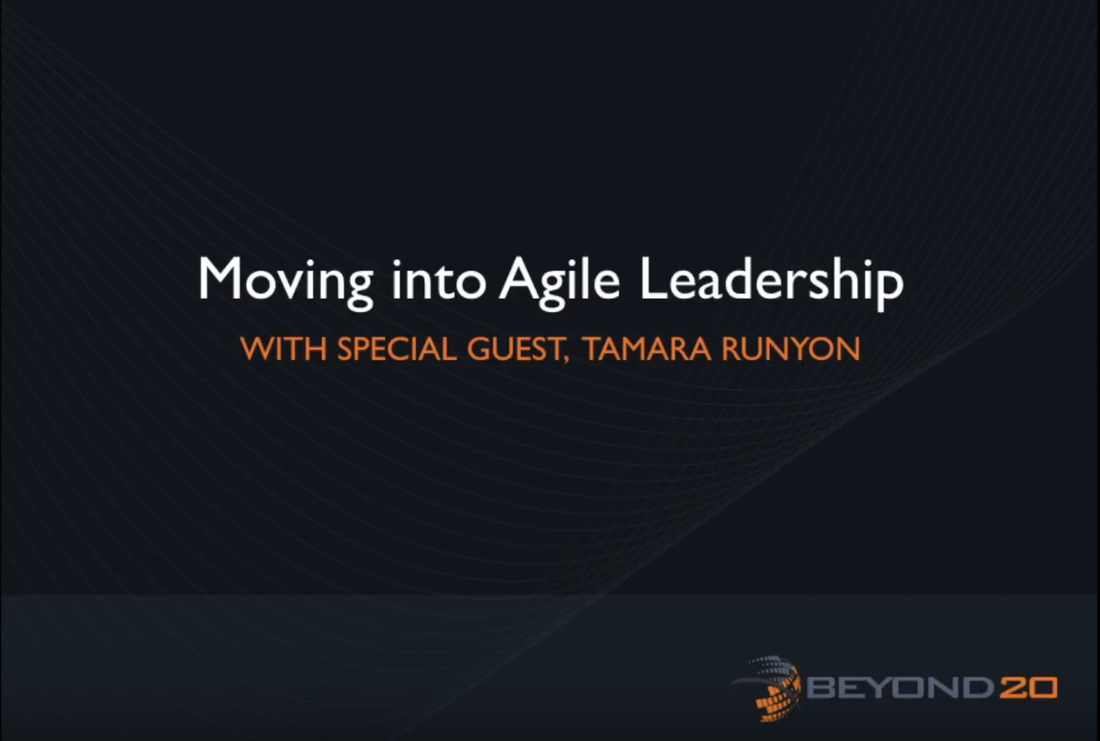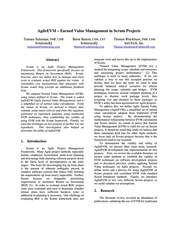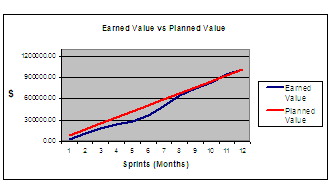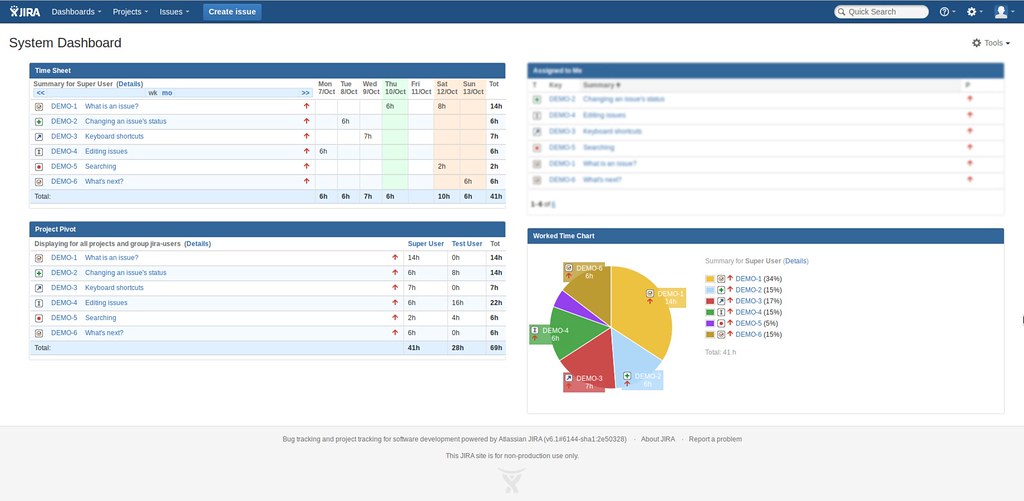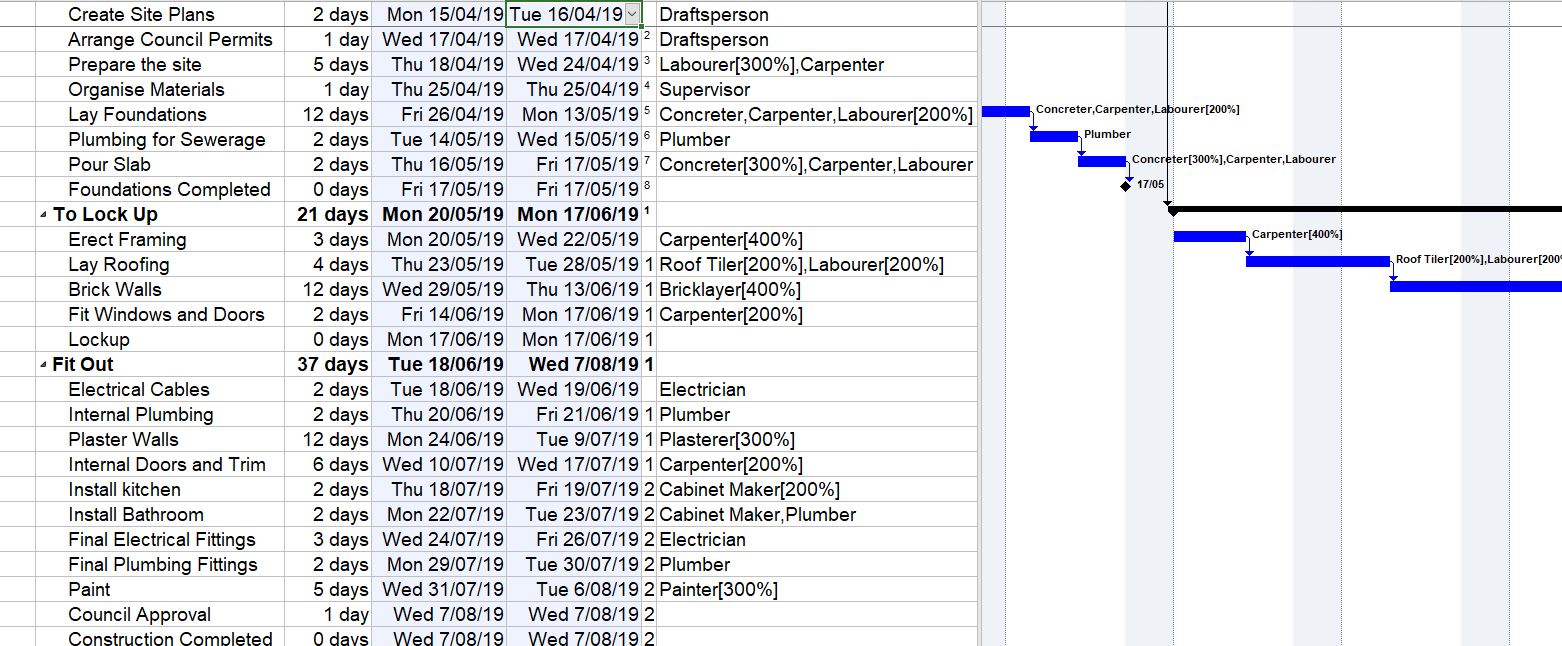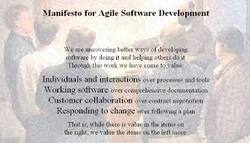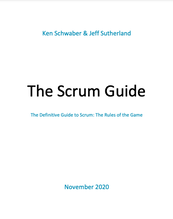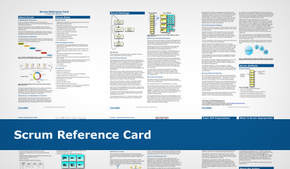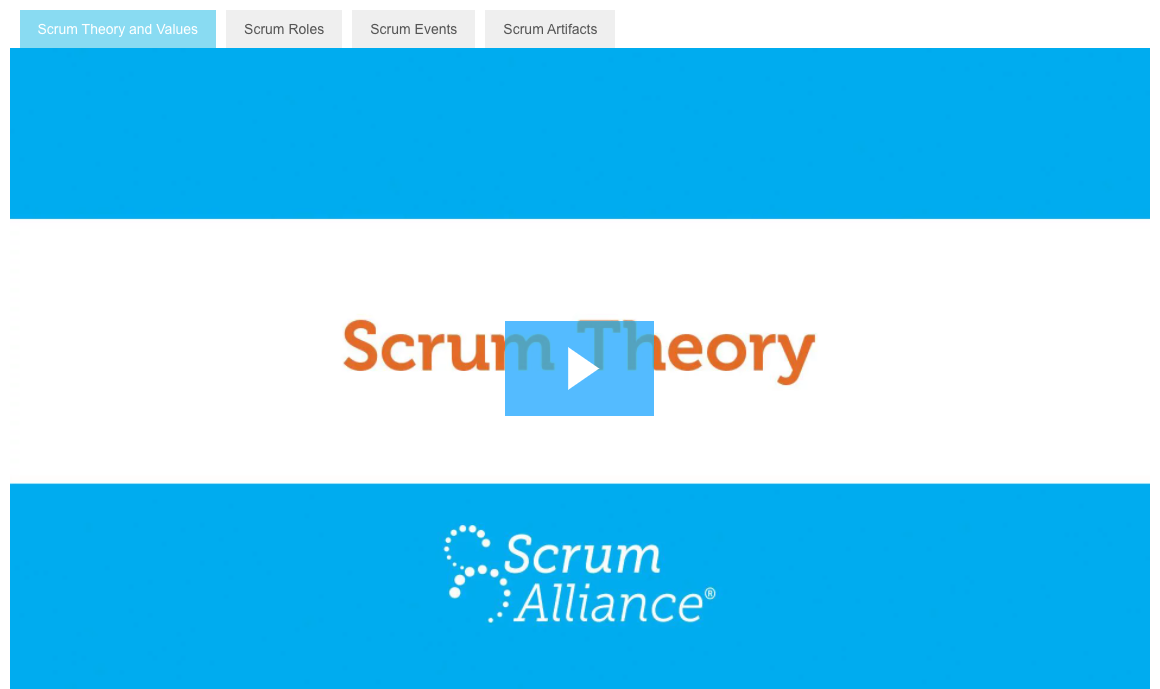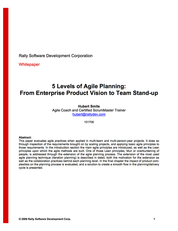Good Agile and Scrum resources are just as important as good Scrum training. Reputable resources are a key part of the Scrum journey, no matter which part of the pathway you're on. At the start, resources are an excellent way to provide a better foundation prior to training. As you move along your Agile pathway and implement Scrum at your organization, the right resources can provide guidance and support. And, as you become more knowledgeable, these resources can provide shared reference points and understanding with team members and colleagues.
Here are some of our favorite free resources. We're adding more all the time, so please stop by occasionally to see what's new.
Here are some of our favorite free resources. We're adding more all the time, so please stop by occasionally to see what's new.
Learning Hour with Shane HastieJoin Tamara Runyon for an exclusive fireside chat with author and Agile Thought Leader Shane Hastie as he joins us virtually from Australia to discuss his new book The Rock Crusher: A Model for Flow-Based Backlog Management, co-authored with Steve Adolph and Ryland Leyton. Tamara and Shane also discuss topics such as Agile ethics, backlog management, and more. This event is part of our mentorship program, the Applied Scrum Learning Hour, which provides our alumni students access to free virtual learning events. Watch a recording of our Learning Hour with Shane Hastie here.
|
Learning Hour with Diana LarsenAn exclusive fireside chat with author and Agile trailblazer Diana Larsen as she discusses her latest book Lead Without Blame: Building Resilient Teams, co-authored with Tricia Broderick, the importance of creating a blame-free workplace, her established concept of Agile Fluency®, and what the future looks like for Agile. This event is part of our mentorship program, the Applied Scrum Learning Hour, which provides our alumni students access to free virtual learning events. Watch a recording of our Learning Hour with Diana Larsen here.
|
Scrum in Unusual Places webinarHere are the slides from our webinar Scrum in Unusual Places: My Lessons on What Worked, What Didn't, and Why. In this webinar, Scrum trainer and enterprise Agile coach Tamara Runyon presents case studies from some of the more unusual places she's implemented Scrum, including chip design development, hardware product development, and even neuroscience research labs. She discusses how they adapted Scrum to fit the unique needs and nuances of each different environment, the unforeseen hurdles and pitfalls they faced, and discoveries made along the way. Watch a recording of the webinar here.
|
The Power of Focus: A Webinar about the Neuroscience of Work and MultitaskingHere are the slides from our webinar The Power of Focus, during which Lisa May, PhD, neuroscientist and Agile Coach, discussed the impact of multitasking on productivity, innovation and learning from a brain perspective. In these slides, you'll find her recommendations based on brain science to help you maintain (and even maximize) your focus in a multitasking-obsessed society, resulting in reduced stress and errors, and increased creativity, learning, and productivity. Watch a recording of the webinar here.
|
LabScrum: A Case Study for Agility in Academic Research Labs by Lisa May, PhD and Tamara Runyon, CST (article)A case study exploring the adaptation of Scrum to address the unique challenges faced in academic scientific research labs. This study summarizes the progress and results of this adaptation, termed LabScrum, which originated in the Center for Translational Neuroscience (CTN), a multi-disciplinary research center at The University of Oregon, and continues to spread to other academic research labs. Read the case study. Read this related article on nature.com.
|
Agile Glossary CardsAgile Glossary flashcards to help you learn the lingo, sharpen your vocabulary, and challenge your teammates. Click to download and print your own.
|
Developing Agile Team Maturity by Tamara (Sulaiman) Runyon (article)Successful agile teams make decisions and act on those decisions; plan and schedule their own work; and take full responsibility for getting the work done. But these highly productive teams don't just happen. They require guidance and support from team leaders who modify their own behaviors as they help the team evolve into a self-organizing independent force.
|
Inspecting Distributed Team Practices by Tamara (Sulaiman) Runyon (article)Geographically distributed teams face additional challenges when transitioning to agile development practices. Some practices may need to be adjusted to the reality of the situation with distributed teams. But how do you know where to adapt and where to leave well enough alone?
|
Capacity Planning: Respecting the Buffer by Tamara (Sulaiman) Runyon (article)When teams suffer from incomplete or missed iteration goals, one area to look into is the iteration planning and execution. Does the team use a buffer in their capacity planning? While there can be many root causes for a team consistently not meeting iteration goals, a misunderstanding of what the buffer is for--or simply not respecting the buffer--is a leading cause of missed iteration goals.
|
Rushing the Tool: Sprint Planning with Distributed Teams by Tamara (Sulaiman) Runyon (article)Agile practices, including Scrum sprint planning, were originally developed with co-located teams in mind. While bringing the team together to plan is ideal, it is not always practical. This article explores a technique called "Rushing the Tool" to facilitate sprint planning with a geographically distributed team.
|
Planning for Effective Agile Retrospectives by Tamara (Sulaiman) Runyon (article)Agile retrospectives are a critical success factor in any iterative and incremental set of practices. In order to get that incremental improvement, your retrospectives must be valuable and effective. This article explores key elements to consider when planning your retrospectives, such as who to invite, what room to use, and which activities to choose.
|
Nuances of Agile Leadership in our VUCA World - from The Work Life Balance with host Rick A. Morris (podcast)This interview with Tamara Runyon explores how Agile leadership can address volatility, uncertainty, complexity, and ambiguity in today's business world. Join Tamara and podcast host Rick Morris as they discuss the nuances of Agile leadership versus a more traditional leadership environment.
|
Moving into Agile Leadership (webinar)How does managing Agile teams differ from the traditional management style? In this live webinar recording, APMI's very own Certified Scrum Trainer Tamara Runyon discusses how Agile teams work differently and what Agile leaders must do to ensure their teams' success.
|
AgileEVM -- Earned Value Management in Scrum Projects by Tamara Sulaiman, Brent Barton, and Thomas Blackburn (whitepaper)The Scrum framework specifically focuses on maximizing ROI. However, it does not define how to manage and track costs to evaluate actual ROI against the vision. A reasonable cost measurement that integrates with Scrum would help provide and additional feedback loop. To solve this problem, we adapted Earned Value Management (EVM) using values defined in Scrum. The result is called AgileEVM (Agile Earned Value Management) and is a simplified set of earned value calculations.
|
AgileEVM: Measuring Cost Efficiency Across the Product Lifecycle by Tamara (Sulaiman) Runyon (article)AgileEVM is an adaptation of the traditional project management practice of measuring actual value of integrated cost, schedule, and scope against a baseline plan using Earned Value Management (EVM) metrics. This paper by APMI's Certified Scrum Trainer Tamara Runyon shows how methods of EVM measurement have been adapted to easily fit within the Scrum project management framework.
|
The Value of Earned Value Management by Tamara (Sulaiman) Runyon (article)This article, originally published on ProjectManagement.com, explores and answers the question, "What does the use of earned value management on agile projects provide that the burn down chart does not?"
|
The Agile PMO Role by Tamara (Sulaiman) Runyon (article)The program management office is one area where an identity complex of sorts can develop when organizations shift to agile software development practices. To many practitioners in the agile world, the term "Agile PMO" sounds like an oxymoron. However, it is not true that there is no role for the PMO in an agile organization.
|
Agile ManifestoThe Agile Manifesto is a formal proclamation of the 4 values and 12 principles which guide all Agile frameworks. Sometimes referred to as the Manifesto for Agile Software Development, the Agile Manifesto has been translated into more than 60 languages.
agilemanifesto.org |
Scrum GuideThe Scrum Guide contains the definitions of Scrum, consisting of Scrum's roles, events, artifacts, and the rules that bind them together. The Scrum Guide is written by pioneers of Scrum, Ken Schwaber and Jeff Sutherland. Most recently updated in November of 2020, the Scrum Guide is available for download in over 30 languages.
scrumguides.org |
Scrum Reference CardThe Scrum Reference Card is a 6-page summary of Scrum organized in an easy-access manner which makes it perfect as a quick reference or overview for those interested in the mechanics of how Scrum works. Available for download in several languages.
scrumreferencecard.com |
Scrum Foundations eLearning SeriesThis 14-part eLearning series is based on the Scrum Guide and covers the four major foundational areas of Scrum -- Scrum Theory and Values, Scrum Roles, Scrum Events, and Scrum Artifacts. In addition to watching the videos, you can download the Scrum Foundations eLearning Series transcripts to follow along if you want.
|
5 Levels of Agile Planning: From Enterprise Product Vision to Team Stand-Up by Hubert Smits (article)This paper evaluates agile practices when applied in multi-team and multi-person-year projects. It does so through inspection of the requirements brought on by scaling projects, and applying basic agile principles to those requirements. In the introduction section the main agile principles are introduced, as well as the Lean principles upon which the agile methods are built.
|
|
MAILING ADDRESS : APMI1630 A 30th Street #510 Boulder, CO 80301-1014
[email protected] | 425.985.4344 |
|
© COPYRIGHT 2022, ADVANCED PROJECT MANAGEMENT, INC. ALL RIGHTS RESERVED.
